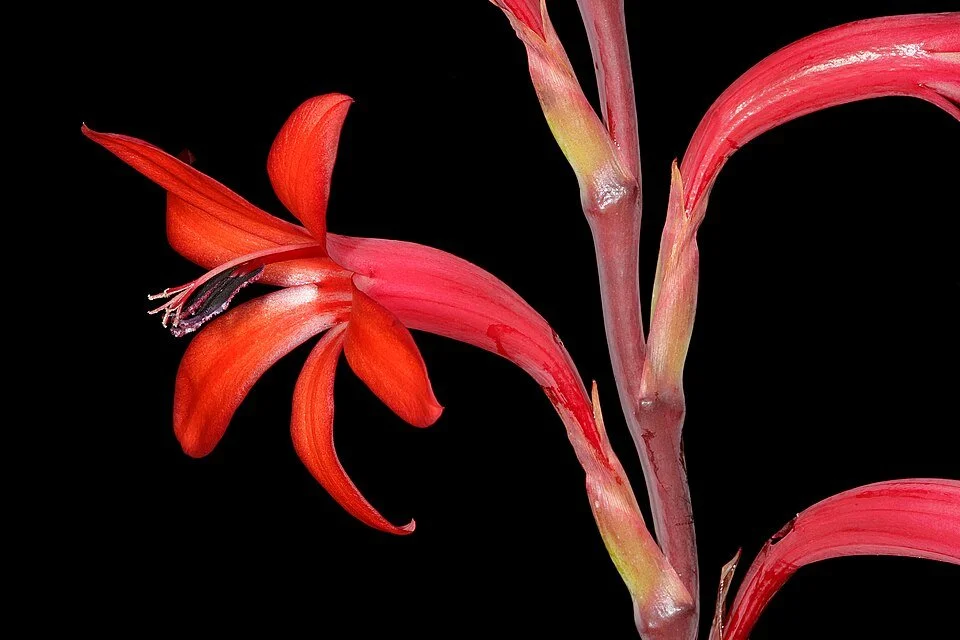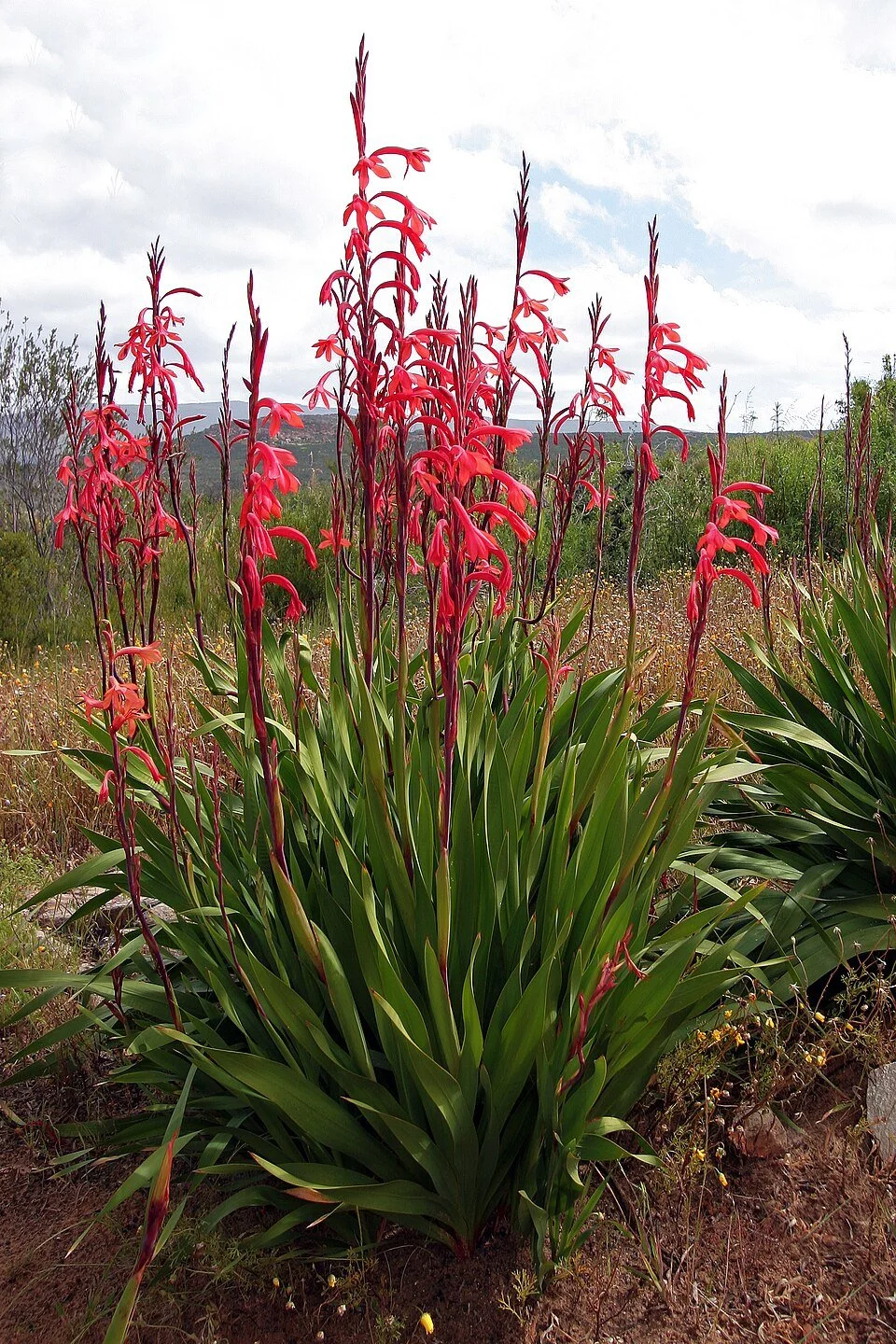

Watsonia aletroides
Watsonia aletroides is a dazzling, compact species of watsonia that lights up the spring garden with spikes of vivid coral-red to salmon-pink tubular flowers, perfectly suited for attracting hummingbirds and other pollinators. Unlike its taller cousins, this watsonia stays compact—usually under 18 inches tall—making it ideal for rock gardens, containers, and the front of sunny borders.
Native to the dry, rocky slopes of South Africa’s Western Cape, particularly in the winter rainfall zones of the Cape Floristic Region, Watsonia aletroides is well adapted to Mediterranean climates with cool, wet winters and hot, dry summers. It emerges in late winter to early spring, blooms in mid-spring, and quickly enters summer dormancy.
In cultivation, it thrives in well-drained, gritty soils and full sun exposure. Overwatering during dormancy should be avoided to prevent corm rot. It grows best in regions with mild winters but can be grown in containers in colder climates for overwintering indoors.
Hardy to about USDA Zone 9, it may tolerate brief, light frosts but is not reliably hardy in freezing conditions. Gardeners in Zones 7–8 can enjoy it by lifting corms in fall or growing it in pots under cover, mine are reliable down to 12 degrees in an unheated greenhouse.
A choice selection for South African bulb enthusiasts, Watsonia aletroides offers a unique blend of color, compactness, and seasonality that sets it apart in the spring garden.
Watsonia aletroides is a dazzling, compact species of watsonia that lights up the spring garden with spikes of vivid coral-red to salmon-pink tubular flowers, perfectly suited for attracting hummingbirds and other pollinators. Unlike its taller cousins, this watsonia stays compact—usually under 18 inches tall—making it ideal for rock gardens, containers, and the front of sunny borders.
Native to the dry, rocky slopes of South Africa’s Western Cape, particularly in the winter rainfall zones of the Cape Floristic Region, Watsonia aletroides is well adapted to Mediterranean climates with cool, wet winters and hot, dry summers. It emerges in late winter to early spring, blooms in mid-spring, and quickly enters summer dormancy.
In cultivation, it thrives in well-drained, gritty soils and full sun exposure. Overwatering during dormancy should be avoided to prevent corm rot. It grows best in regions with mild winters but can be grown in containers in colder climates for overwintering indoors.
Hardy to about USDA Zone 9, it may tolerate brief, light frosts but is not reliably hardy in freezing conditions. Gardeners in Zones 7–8 can enjoy it by lifting corms in fall or growing it in pots under cover, mine are reliable down to 12 degrees in an unheated greenhouse.
A choice selection for South African bulb enthusiasts, Watsonia aletroides offers a unique blend of color, compactness, and seasonality that sets it apart in the spring garden.


